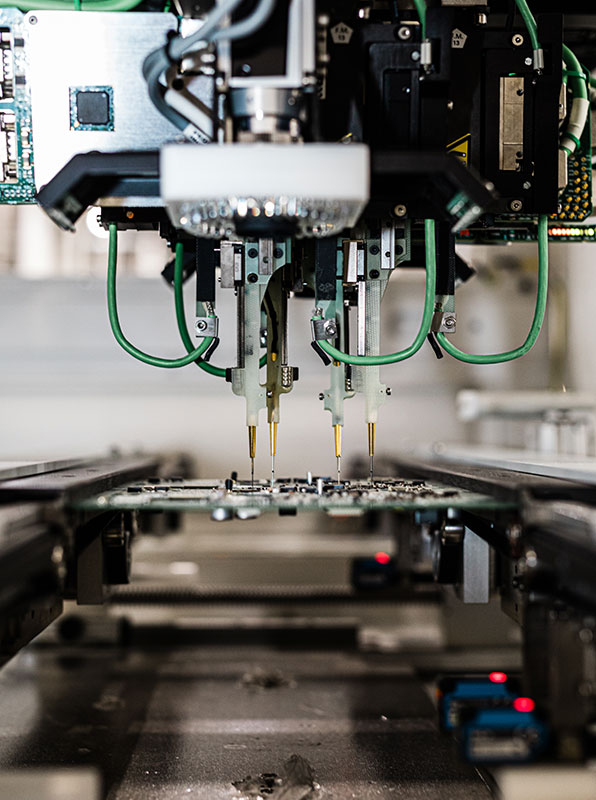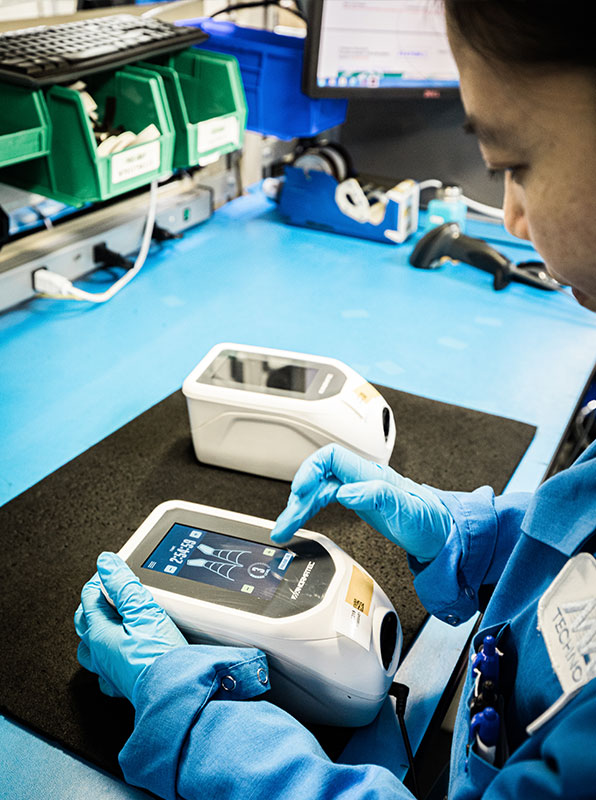Design for Excellence and New Product Introduction
Identifying Opportunities for Improvement
Mack focuses on identifying opportunities for design, supply chain, reliability, and cost improvements at each stage of a manufacturing program. Our unique design for excellence (DFx) processes stem from an innovative set of IT services currently embedded in our three manufacturing locations. This unique toolset allows our experienced teams to support a suite of DFx services, including design for manufacturability, design for supply chain, and design for test.
Design for Manufacturability
Along with traditional engineering reviews, Mack Technologies uses Valor vPlan as a CAM tool for design for manufacturability (DFM) reviews and manufacturing guidance.
- Valor’s extensive parts library ensures comprehensive, real-time access to changing component information.
- Our engineers analyze Valor data to identify strategies for cost reductions, reliability improvements, and defect avoidance.
- Pre-build reports address prototype redesign issues before first builds begin.
- Prototype post-build reports identify potential design, reliability, and manufacturability improvements, and highlight cost-reduction strategies for future builds.

Design for Supply Chain
Along with our procurement team’s expertise, Mack employs a specialized database of over a billion parts to manage the component lifecycle and to mitigate supply chain risk. Communication is seamless and highly accurate because component manufacturers supply real-time information to the database.
- Procurement and Design: Mack’s procurement teams review initial customer design files to propose lower-cost equivalent parts when available. We analyze new bills of materials to proactively identify components that are obsolete, not recommended for new design, or high-risk. These analyses help customers reduce material costs, optimize product life cycles, and extend product life.
- Component Monitoring: Mack proactively alerts customers when components become obsolete or reach end-of-life, require a last time buy, or face diminishing supply. We recommend and validate alternate-parts proposals for cost and availability.
Design for Test
Mack Technologies uses a combination of test design software and test engineering expertise to evaluate test and inspection strategies. Our established design for test (DFT) process ensures that product designs include access for assembly-testing at the prototype and production stages. Early-stage testing contributes to higher test coverage, lower test costs, and higher-quality products; information gleaned from testing software helps us pinpoint test effectiveness, lower capital investment, and improve test and inspection equipment performance.
Manufacturing execution software (MES) helps us (1) review first pass yield and cumulative yields in real time; (2) optimize test strategy deployments to minimize test coverage overlaps, test times, and product escapes; and (3) improve strategies using actual customer Defects per Million Opportunities (DPMO).

New Product Introduction

New Product Introduction
Program Managers lead new product introduction efforts by creating business cells; functional teams operate within each cell. Business cells adhere to compressed schedules and react to multiple changes during the product launch process.
Cost-Effective Prototype Development
Mack’s materials and engineering teams work closely with customers and suppliers to meet aggressive prototype launch deadlines. Our capital equipment—such as flying probe, Automated Optical Inspection (AOI), and X-ray inspection—reduces tooling costs for small production builds and keeps prototype costs low. Additionally, our internal quality controls save customers time and money by ensuring defect-free prototypes.
Post-Build Evaluation
After a prototype is complete, Mack engineers generate a comprehensive post-build report. The report identifies opportunities to improve the product’s design, reliability, and manufacturability, and highlights ways to reduce future production costs.
